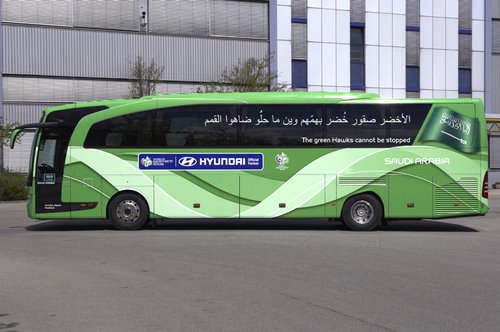Hazare fills the void in corruption battle
Past two weeks back, India was trying to come to terms with a phenomenon they neither understood nor anticipated.
The abrupt emergence of Anna Hazare as the symbol of a largely middle-class outburst against the insincerity of the war on corruption had been puzzling. In many ways, this 71-year-old self-professed Gandhian from rural Maharashtra is a total antithesis of what modern India apparently stands for. He is neither young nor tech-savvy ; he doesn’t talk the ‘development’ jargon of well-travelled NGO activists; and his politico-cultural symbolism — Chhatrapati Shivaji, Swami Vivekananda, Mahatma Gandhi, Bharat Mata and Vande Mataram—is seemingly at odds with modernist impulses of India’s aspirational classes. Yet, Anna has become the unlikeliest symbol of a movement that may well end up unseating a government, even if it doesn’t succeed in cleansing public life.
Perhaps the lionization of another diminutive man with an infectious smile is an indication that the more India changes the more it remains the same. Nearly four decades ago, professor W H Morris-Jones observed that Indian leadership follows three idioms: the traditional, the modern and the saintly. The last fits uneasily into perceptions of Indian modernity or, for that matter, the caricatured view of its conservatism. But in the past 100 years, the most significant movements for change have been propelled by people who lived in a world of their own imagination and were driven by exacting ethical standards.
Frankly, you had to be a bit crazy in 1919 to dream of unseating the Raj. You also had to be very other-worldly to believe in 1973 — barely a year after Indira Gandhi’s anointment as “Durga” after the Bangladesh war — that the corrupt edifice of the Congress Party could be brought down. Maybe it is too rash as yet to place Anna on par with either the Mahatma or ‘Loknayak’ Jayaprakash Narayan — the two saintly crazies who reshaped 20th century India. Yet, it is important to recognize that being impractical has never been a deterrent to inspirational leadership, at least not in India.
There are many features of the alternative Jan Lokpal Bill proposed by Anna and his supporters that are either outrageous or quirky. The belief that a Lokpal appointed by a committee of the great and good should have overriding powers over an elected government is at best utopian and, at worst, anti-democratic. And the proposal of who should constitute the electoral college of the virtuous is, to say the least, eccentric. Why should all those of Indian origin honoured by the Nobel committee in Sweden and Norway and the last two Magsaysay Prize winners — chosen by a committee in the Philippines—be ex-officio members of a desi star chamber. Why not the recipients of the Padma Vibhushan and Bharat Ratna? Or for that matter, why not everyone honoured by the local Rotary Club?
The issue, fortunately, is neither the Lokpal Bill nor even the principle of ‘civil society’ representation in the drafting committee—a characteristically NGO-ish demand. The overwhelming majority of those inspired by Anna’s fast don’t seem all that preoccupied with the minutiae of a proposed legislation. What has excited them is the fact that someone of unimpeachable integrity has chosen to take a stand and confront a decrepit and smug system on the issue of corruption.
In 1921, when Mahatma Gandhi asked people to abandon schools, colleges, law courts, and resign from government service in the quest of swaraj in just a year, only a small handful actually did so. Indeed, many of India’s foremost intellectuals, including Rabindranath Tagore, were disturbed by what they saw as Gandhi’s reckless manipulation of impressionable young minds. But Gandhi’s larger moral appeal outweighed the shortcomings of his political strategy. The Mahatma became a national inspiration in the struggle for independence; Gandhism always remained a fad. A similar distinction marked JP, the symbol of resistance to Indira Gandhi’s authoritarian misrule and his woolly ‘Total Revolution’.
In the coming weeks, there will be fierce assaults, not least by rival ‘civil society’ activists, on the implications of Anna’s Jan Lokpal proposals. Some of these will be couched in lofty constitutionalism such as the sovereignty of Parliament ; others will be blended with competitive self-righteousness ; and still others will see Anna as an unwitting tool of the anti-Congress opposition, just as the communists saw ‘fascist forces’ in JP’s movement.
A clinical dissection of what Anna actually represents and the forces backing him will not, however, divert focus from the growing groundswell against corruption. There is a political space for a credible, even angry, movement against the rot in India’s political system. Circumstances have allowed a venerable, gutsy and untainted outsider to fill the void. It’s the sentiment behind his anointment that is relevant, not the fine print of a law to make India virtuous.
Past two weeks back, India was trying to come to terms with a phenomenon they neither understood nor anticipated.
The abrupt emergence of Anna Hazare as the symbol of a largely middle-class outburst against the insincerity of the war on corruption had been puzzling. In many ways, this 71-year-old self-professed Gandhian from rural Maharashtra is a total antithesis of what modern India apparently stands for. He is neither young nor tech-savvy ; he doesn’t talk the ‘development’ jargon of well-travelled NGO activists; and his politico-cultural symbolism — Chhatrapati Shivaji, Swami Vivekananda, Mahatma Gandhi, Bharat Mata and Vande Mataram—is seemingly at odds with modernist impulses of India’s aspirational classes. Yet, Anna has become the unlikeliest symbol of a movement that may well end up unseating a government, even if it doesn’t succeed in cleansing public life.
Perhaps the lionization of another diminutive man with an infectious smile is an indication that the more India changes the more it remains the same. Nearly four decades ago, professor W H Morris-Jones observed that Indian leadership follows three idioms: the traditional, the modern and the saintly. The last fits uneasily into perceptions of Indian modernity or, for that matter, the caricatured view of its conservatism. But in the past 100 years, the most significant movements for change have been propelled by people who lived in a world of their own imagination and were driven by exacting ethical standards.
Frankly, you had to be a bit crazy in 1919 to dream of unseating the Raj. You also had to be very other-worldly to believe in 1973 — barely a year after Indira Gandhi’s anointment as “Durga” after the Bangladesh war — that the corrupt edifice of the Congress Party could be brought down. Maybe it is too rash as yet to place Anna on par with either the Mahatma or ‘Loknayak’ Jayaprakash Narayan — the two saintly crazies who reshaped 20th century India. Yet, it is important to recognize that being impractical has never been a deterrent to inspirational leadership, at least not in India.
There are many features of the alternative Jan Lokpal Bill proposed by Anna and his supporters that are either outrageous or quirky. The belief that a Lokpal appointed by a committee of the great and good should have overriding powers over an elected government is at best utopian and, at worst, anti-democratic. And the proposal of who should constitute the electoral college of the virtuous is, to say the least, eccentric. Why should all those of Indian origin honoured by the Nobel committee in Sweden and Norway and the last two Magsaysay Prize winners — chosen by a committee in the Philippines—be ex-officio members of a desi star chamber. Why not the recipients of the Padma Vibhushan and Bharat Ratna? Or for that matter, why not everyone honoured by the local Rotary Club?
The issue, fortunately, is neither the Lokpal Bill nor even the principle of ‘civil society’ representation in the drafting committee—a characteristically NGO-ish demand. The overwhelming majority of those inspired by Anna’s fast don’t seem all that preoccupied with the minutiae of a proposed legislation. What has excited them is the fact that someone of unimpeachable integrity has chosen to take a stand and confront a decrepit and smug system on the issue of corruption.
In 1921, when Mahatma Gandhi asked people to abandon schools, colleges, law courts, and resign from government service in the quest of swaraj in just a year, only a small handful actually did so. Indeed, many of India’s foremost intellectuals, including Rabindranath Tagore, were disturbed by what they saw as Gandhi’s reckless manipulation of impressionable young minds. But Gandhi’s larger moral appeal outweighed the shortcomings of his political strategy. The Mahatma became a national inspiration in the struggle for independence; Gandhism always remained a fad. A similar distinction marked JP, the symbol of resistance to Indira Gandhi’s authoritarian misrule and his woolly ‘Total Revolution’.
In the coming weeks, there will be fierce assaults, not least by rival ‘civil society’ activists, on the implications of Anna’s Jan Lokpal proposals. Some of these will be couched in lofty constitutionalism such as the sovereignty of Parliament ; others will be blended with competitive self-righteousness ; and still others will see Anna as an unwitting tool of the anti-Congress opposition, just as the communists saw ‘fascist forces’ in JP’s movement.
A clinical dissection of what Anna actually represents and the forces backing him will not, however, divert focus from the growing groundswell against corruption. There is a political space for a credible, even angry, movement against the rot in India’s political system. Circumstances have allowed a venerable, gutsy and untainted outsider to fill the void. It’s the sentiment behind his anointment that is relevant, not the fine print of a law to make India virtuous.





 It appears that this is some kind of World Cup soccer ball, with the flags of the various participating nations -- including Saudi Arabia.
It appears that this is some kind of World Cup soccer ball, with the flags of the various participating nations -- including Saudi Arabia. 
